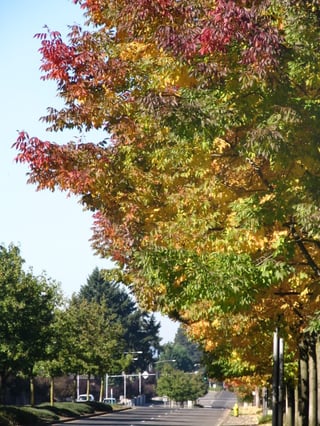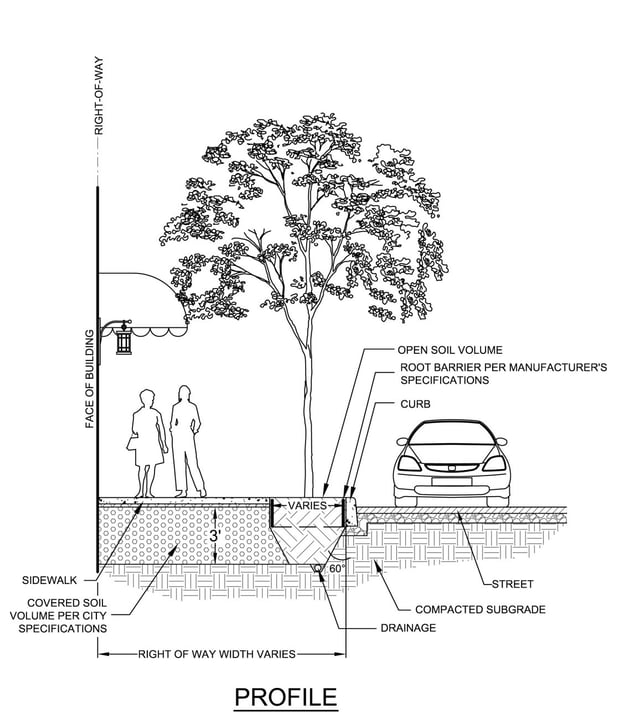
One of the main design elements for any successful road project is the street trees. Some may look at street trees as an afterthought, but they shouldn’t. Street trees serve many important functions such as creating shade (minimizing heat island effect), enhancing the aesthetic appeal of the street, providing habitat for birds and other wildlife within developed areas, and adding to the value of nearby homes and businesses.
Because of all the benefits provided by street trees – especially mature trees – maximizing survival rates is a top priority. When considering the keys to street tree survival, species selection is obviously important, but if there is one thing I have learned over the years it is that for successful planting you must start with the soil.
Considering Soil Volume
When I say soil I don’t mean the topsoil. Yes, good topsoil is a necessity, but appreciating how soil volume relates to a tree’s health is a big step towards being able to specify the right tree and increasing the chances for survival.
In keeping this conversation brief, trees typically are categorized as small, medium or large canopies. The tree canopy at maturity equates to the required soil volume for a tree’s success. The “at maturity” part is vital, especially if you’re planting what will become a large tree. To determine how much soil you will need, keep this in mind: on average a small tree needs around 500 cubic feet of soil and a large tree needs around 1,000 cubic feet.
The problem is, the average tree planter is about 4’ wide x 6’ long x 3’ deep – in other words, it only provides 72 cubic feet of soil. That’s not even close to the optimal volume for even a small tree!
How to Provide the Appropriate Volume
If you’re facing a lack of soil volume to support the growth and maturity of your street trees, you have two primary options to consider:
- Use a larger planting bed
- Use ‘covered’ soils
A larger planter bed is the best choice, but unfortunately it is often is not feasible, either due to space restrictions or regulatory requirements (many jurisdictions will require a road modification or variance to even consider changing the size of the planter).
‘Covered’ soils are a good alternative where a larger planter isn’t feasible. This method involves providing additional volume under adjacent sidewalks or paved areas. Covered soils are an engineered material and typically consist of a mixture of gravel, topsoil and admixtures that are designed to support paved surfaces while still providing the air and nutrients needed for root growth. The following detail, from the City of Tigard's Urban Forestry Manual, illustrates how they work:

Covered soils carry additional costs, so if your project budget is tight this might not always be an option. However, I think once you evaluate your initial costs versus long term maintenance, replacement costs of diseased or dead trees, and liability exposure you will find that in the end it is well worth the initial investment.
Start with the Soil
It can be easy to overlook the importance of street trees, but take a moment to imagine what our streets would look and function like without them. Not a pretty picture!
Tree species selection is essential, but don’t make the mistake of overlooking how important soil volume is to a tree’s health and survival. Start with the soil. Always plan and design for the size of the tree at maturity, and if at all possible be willing to spend a bit extra up front to optimize soil conditions for long-term survival. You’ll be glad you did.
Do you consider tree soil and volume on your projects? What measures do you take to provide appropriate volumes? Please leave a comment below, or you can connect with me at bcole@mackaysposito.com or on LinkedIn.

